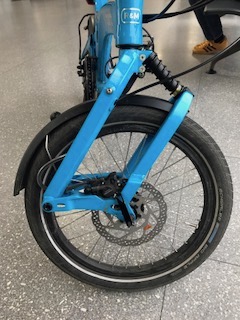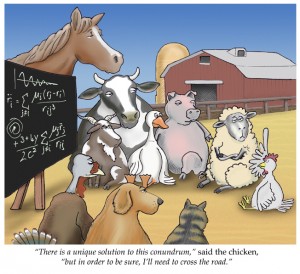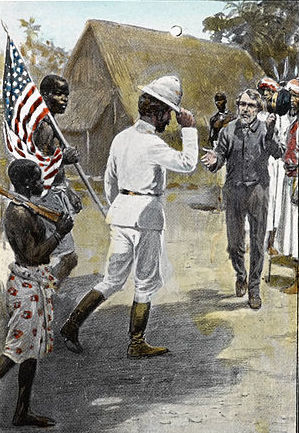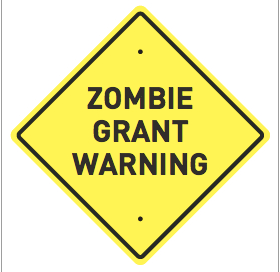
A few years ago I found that writing a summary in the form of a set of key sentences is a good way to start writing a complex document with a specific set of requirements, like the case for support in a grant application. Since then I always start a case for support by writing a set of key sentences and I teach workshop participants to do the same, with mixed results. Most workshop participants find it very hard to produce key sentences that work well, and sometimes I wonder whether a different approach might be better. Recently I have come to realise that the most important advantage of the key sentences is the help that they give the reader.
Key sentences create a framework for the case for support that makes your main points accessible to every reader and places the detail that supports your arguments where readers will find it. Consequently, even if key sentences don’t help you to write a case for support, you should use them to structure the case for support when you have written it.
The key sentence framework gives a document a hierarchical structure, so that it starts with the most important point of the document, states the main points, and then fills in the details. Each key sentence states one of these points, starting with the most important, and continuing with those that support it. The key sentences comprise the introduction to the document; they state every point you want to make, beginning with the most important.
The rest of the case for support consists of a series of sections, each of which begins with one of the key sentences, and continues with the detail that supports it. The key sentences reappear in the same order as they appear in the introduction, starting with the second. This means that the introduction states every major point you make in the document, in the order in which you make them. Each of the other sections repeats one of the points, helping the reader to remember it, before supporting it with the detail that will convince critical readers to accept the point. The first key sentence doesn’t reappear after the introduction because its job is to start the first section, the introduction.
It makes sense to give each section a hierarchical structure too. The first paragraph of the section summarises the section by stating the points you want to make in the section, the section continues with paragraphs that make those points in order. The paragraphs are also hierarchical: each one begins with its topic sentence, which states the point of the paragraph, and continues with the sentences that support or develop it.
For a research project grant application there are ten key sentences. I have named them so the initial letters spell the word PIPPIN, which the Oxford English Dictionary defines as “An excellent person or thing”. Other kinds of grant application, such as fellowships, need a slightly different set of key sentences because they need to make a different set of points. The PIPPIN sentences are:-
- Promise – a one-sentence overview of the whole case for support. It should say what the research project will achieve, in a way that is both accessible and convincing.
- Importance – this sentence tells the reader what is it that makes the project important to the funding body you are applying to. This sentence should give evidence that the project will help achieve one or more of the funder’s strategic aims.
- Problem There will be three sentences that state problems that your project has to solve in order to fulfil its promise. There will be three problems. These sentences are part of a device to convince the funder that the project will be a success. The ‘Implementation’ sentences (see below) complete the device.
- Project There will be a one-sentence summary of the project to say whatever you need the reader to know if they only read one sentence about the project.
- Implementation There will be three sentences that describe the main work-packages in a way that makes it clear that each work-package solves one of the three problems. This convinces the funder that your project will work.
- Next This sentence says what will happen when the research is done. It could be about ensuring impact or exploiting other opportunities created by the project.
I designed the PIPPIN key sentences to meet the needs both of the grants committee, who decide on the ranking of the grant, and of the referees, who write an expert report for the committee. The differences between their roles mean these two groups read the grant in different ways.
The grants committee don’t have time to read the case for support carefully, and most of them will find the specialist jargon of your field impenetrable. So the PIPPIN key sentences state the things committee members want to know as clearly as possible. The sentences are repeated more than once so that the jargon they contain becomes more familiar. The introduction tells exactly the same story as the full case for support, and uses the same words.
The key sentences also form the core of any summaries that are attached to the application form, including the lay summary, the technical summary and the aims and objectives. Some members of the committee may read these summaries instead of the case for support, so using the key sentences ensures that these people read the same story, in the same words, as those who read the case for support. Even those who read the case for support will probably read one of the summaries first. Using the key sentences in the summaries makes these readers more likely to understand the case for support when they read it.
The key sentence structure also makes the referees’ job as easy as possible. Referees read the case for support actively, looking for detailed evidence to support the main points that they noted on reading the summary. When the key-sentences reappear in the introduction, they reassure the referee that the case for support will deal with all the points listed in the summary. When they reappear again in the case for support, the key sentences guide the referee to the evidence they are looking for.
The pippin key sentences work to ‘sell’ any kind of project. They can also be adapted to sell similar activities, like my grant-writing workshops. I am also working on a set that sell my formula for a case for support.
If you have a different kind of grant application you may need a different set of key sentences. For example, in a fellowship application you would need a key sentence about what makes you a suitable candidate, and one about what makes your institution a good place to hold the fellowship. In grant applications where you have to write about your track record, you should create a key sentence for each point you want to make. In fact, key sentences are a good way of giving structure to any document that you want the reader to be able to read quickly and summarise easily. You create the summary as a set of key sentences and then you use the summary as a framework to organise the document. It’s unlikely that your set of key sentences will be the same as PIPPIN, but you will definitely find them to be an excellent thing.
Given all the benefits of the key sentence structure, you might question why anybody should structure a case for support in any other way. I don’t know the answer, but if you want to make your case for support easy to read you should create a set of key sentences and use them as a framework to organise the text.



![By Pieter Brueghel (http://gnozis.info/?q=node/2792) [Public domain], via Wikimedia Commons](/wp-content/uploads/2015/09/Desidia_-_The_Seven_Deadly_Sins_-_Pieter_Brueghel-1024x795.png)





